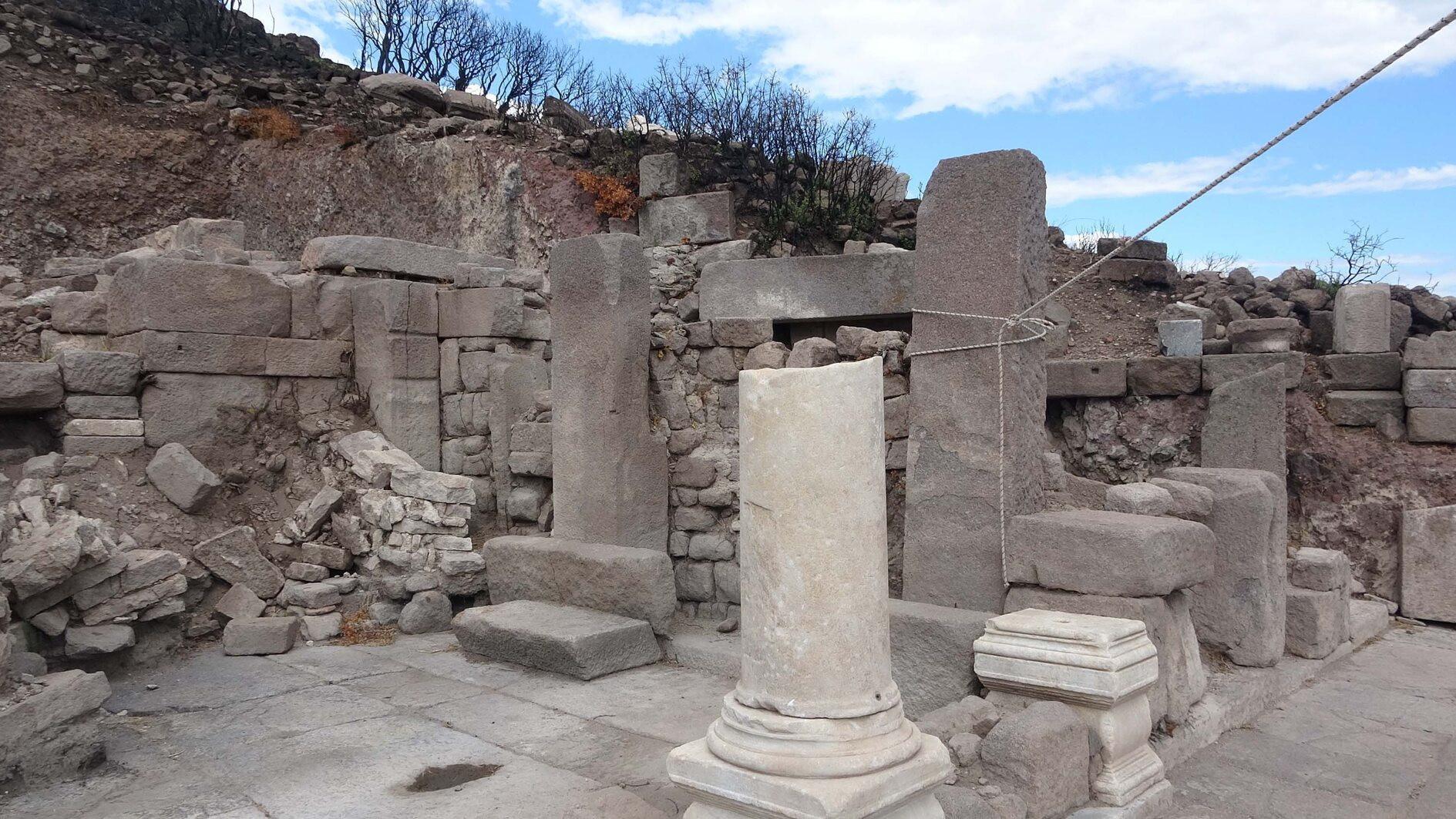
Ongoing excavation works at the 7,000-year-old ancient city of Assos, located in the northwestern province of Çanakkale's Ayvacık district, continue to reveal structures from the Hellenistic, Roman and Byzantine periods.
Assos is considered one of the finest models of the ancient Greek city-state and where Aristotle and Plato's students once worked. The excavations, carried out by a team of 25 people from both Türkiye and abroad, shed light on structures from the Hellenistic, Roman and Byzantine periods, revealing daily life in ancient times.
Excavations were initiated by a Turkish team in the ancient city in 1981 after short-term U.S.-led excavations between 1881 and 1883. Works have been continuing uninterruptedly for 42 years since then, making Assos one of the oldest excavation centers in Türkiye.
The head of excavations, Professor Nurettin Arslan from the Faculty of Humanities and Social Sciences at Çanakkale Onsekiz Mart University's Department of Archaeology, said: "This year, excavations and restorations will continue at different points in the city. In the eastern part of the city, in an area we call the agora, we have a large structure that we believe to be a nymphaeum or fountain. Our work in this area still continues."
"Additionally, there is another structure, believed to be an inn from the Byzantine period, located just behind the western gate. Each year, we uncover one room of this structure, helping us learn more about its function and usage. We are also continuing our research on the history of the walls of the acropolis, conducting drilling to determine their exact dates," he added.
Arslan emphasized that they would be working on a large structure that contains mosaics from the Hellenistic period. "Later, we will continue our excavations at a gymnasium, an educational institution. In fact, each area we work on in Assos belongs to a different era. For example, the fountain structure, the nymphaeum, is from the Roman period. At that time, it was likely one of the most important public structures, as it met the water needs of the people," he said.
"Another structure we are working on is the gymnasium, which is a significant educational institution from the Hellenistic period. This is also an important and large building for the city. Additionally, we have a structure known as a 'ksenodokhion,' where travelers from outside the city stayed during the Byzantine period. Each building holds distinct significance for its era," he added.